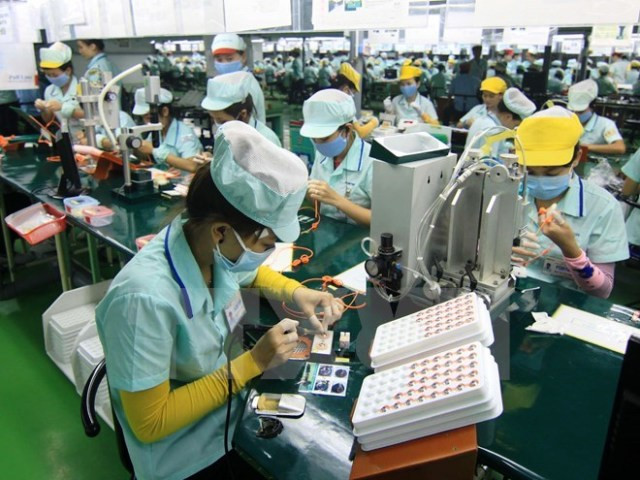HCM City (VNA) – The southeastern region needs long-term planning and strategy for human resources development to meet the demands of industries during its socioeconomic development towards 2030 with a vision to 2045, an official has said.
At a recent conference on Education and Training Development in the Southeast region to 2030, with a vision to 2045, organised by the Ministry of Education and Training in Binh Duong province, Deputy Prime Minister Tran Hong Ha directed localities in the region to continue to invest resources and overcome difficulties to achieve the goals of comprehensively developing high-quality human resources for the regional development.
As human resources are fundamental, only investment in education and training can create a new driving force for the development of the country, he stressed
Between 2012 and 2022, education and training networks in the southeastern region enjoyed huge investment and harmonious development following the local realities. This created favourable conditions and opportunities for students, contributing to raising the people's intellectual level, and training human resources for regional localities and the country as a whole. The region's higher education is increasingly affirming its role as a key for training high-quality human resources in the country, with nearly 60 universities and more than 300 vocational training institutions.
As the country’s economic locomotive and the largest science and technology hub in the country and the southeast region, Ho Chi Minh City is striving to increase the proportion of trained workers to 87% by 2025 and 89% by 2030.
At least 10% of public vocational education institutions in the city will be verified to meet ASEAN and international standards by 2025. The rate is expected to increase to at least 30% by 2030.
Deputy Director of the city’s Department of Labour, Invalids and Social Affairs Nguyen Van Lam said that to achieve the goals, the city is focusing on human resources training to meet the needs of the labour market and the economic restructuring.
The city will develop criteria for the evaluation and ranking of vocational education institutions as a basis for reorganising public non-business units and encourage the private sector to join develop vocational education.
Dr. Nguyen Duc Nghia, former Vice President of Vietnam National University, Ho Chi Minh City, recommended that universities and vocational education sectors must closely coordinate with State management bodies and enterprises to connect supply and demand.
Lecturer Nguyen Chu Du from the Trade Union University said the southeast region needs to focus on building and perfecting the overall strategy, system of mechanisms, and policies for developing high-quality human resources. The strategy must closely link the training and the use of high-quality human resources.
 Ho Chi Minh City is striving to increase the proportion of trained workers to 87% by 2025 and 89% by 2030. (Photo: VNA)
Ho Chi Minh City is striving to increase the proportion of trained workers to 87% by 2025 and 89% by 2030. (Photo: VNA)According to a research team led by Dr. Dinh Cong Khai from Ho Chi Minh City University of Economics, the State and localities need to roll out policies to support and encourage training institutions. The State should play an intermediary role, linking businesses and schools through forecasting human needs, providing information for training institutions, and creating favourable conditions for businesses and training institutions to meet and discuss in depth about each industry.
Minister of Education and Training Nguyen Kim Son said that the southeast region needs to plan to rearrange and restructure its education system at all levels, especially the university one. Now, the distribution of universities in the region is uneven, focusing mostly in Ho Chi Minh City while Tay Ninh and Binh Phuoc provinces do not have universities.
In addition, the region needs to promote socialisation, internationalisation, modernisation, digitisation, and universalisation, he said, adding there should not be a discrimination between the public and the private sectors in education policies./.





























